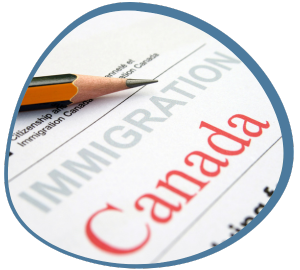
What type of immigration is most common in Canada?
Home » Blog » Immigration Process » 3 Most Common Types of Immigration in Canada
Canada offers various immigration programs that cater to different individuals’ circumstances and aspirations. These programs provide pathways to obtain permanent residency and, eventually, Canadian citizenship. Let’s explore some of the most common immigration programs.
Express Entry
Express Entry is an immigration system that manages the applications of skilled workers who wish to immigrate to Canada.
It includes three main economic immigration programs: the Federal Skilled Worker Program (FSWP), the Federal Skilled Trades Program (FSTP), and the Canadian Experience Class (CEC).
Provincial Nominee Programs
Provincial Nominee Programs are immigration programs administered by individual Canadian provinces and territories.
PNPs allow provinces to nominate foreign nationals who have the skills and experience needed in their local labor markets.
Family Class Sponsorship
The Family Class Sponsorship program allows Canadian citizens and permanent residents to sponsor their family members to immigrate to Canada.
This program is designed to reunite families and includes sponsorship categories for spouses, common-law partners, conjugal partners, dependent children, parents, and grandparents.
Quick Links:
🚄 Express Entry
Express Entry is a flagship program for economic immigration in Canada. It manages applications for the Federal Skilled Worker Program, Canadian Experience Class, Federal Skilled Trades Program, and some Provincial Nominee Programs. Through Express Entry, applicants create an online profile and are ranked based on factors such as age, education, work experience, language proficiency, and adaptability. The highest-ranking candidates are invited to apply for permanent residency.
✔️ Eligibility Requirements for Express Entry
To be eligible for Express Entry, candidates must meet certain criteria, including:
Language Proficiency Requirements
Minimum language proficiency requirements in English or French.
Educational Background
Educational qualifications, such as having a degree, diploma, or certificate from a recognized institution.
Work Experience
Work experience in a skilled occupation, as determined by the National Occupational Classification (NOC) system.
CRS Score
Meeting the minimum required score on the Comprehensive Ranking System (CRS) based on factors like age, education, work experience, language proficiency, and adaptability.
Additional Proof
Proof of funds to support settlement in Canada.
📍 How to Navigate the Application Process for Express Entry?
The application process for Express Entry involves the following key steps:
Applicants need to create an Express Entry profile and provide accurate information regarding their skills, work experience, education, language proficiency, and other relevant details.
The CRS score is calculated based on factors such as age, education, work experience, language proficiency, and adaptability. Applicants with higher scores have better chances of receiving an Invitation to Apply (ITA) for permanent residency.
Candidates with high CRS scores are invited to apply for permanent residency through regular draws conducted by Immigration, Refugees and Citizenship Canada (IRCC).
Once an ITA is received, applicants must submit the necessary supporting documents, such as educational credentials, language test results, and work experience letters, within the stipulated timeframe.
Applicants are required to undergo medical examinations and provide police clearance certificates to ensure admissibility to Canada.
Upon receiving approval, applicants can proceed with their permanent residency application, including paying the required fees and providing additional documents.
💲 Understanding the Costs and Processing Times in Express Entry
Source: https://ircc.canada.ca
Note: If you are applying with the assistance of a private consultant or agency, the fees may vary between $3,000 CAD and $7,000 CAD (or higher), depending on the packages offered. It is advisable to inquire with your private immigration agency for a complete list of fees.
The processing times for Express Entry applications can vary depending on various factors, such as the volume of applications received and the complexity of individual cases. However, the IRCC aims to process complete applications within six months or less.
⚖️ Advantages and Disadvantages of Express Entry
While Express Entry offers numerous benefits, it is essential to consider both the advantages and disadvantages of the program before applying. This will help individuals make an informed decision and understand the potential challenges they may encounter.
Advantages
|
Disadvantages
|
🗳️ Provincial Nominee Programs (PNPs)
Provincial Nominee Programs play a significant role in attracting immigrants to Canada. These programs are tailored to address specific labor market needs of each Canadian province and territory. Provinces can nominate candidates with the skills and experience required to contribute to their local economies. Each PNP has its own set of eligibility criteria and selection process, so it’s crucial to research and identify the most suitable program for your circumstances.
☑️ Eligibility Requirements for Provincial Nominee Programs
To be eligible for a Provincial Nominee Program, applicants must meet certain criteria, including:
Territorial Requirements
Meeting the specific requirements of the province or territory where they intend to apply.
Skill Requirements
Possessing the necessary skills, work experience, and education that align with the province’s labor market needs.
Language Proficiency Requirements
Demonstrating language proficiency in either English or French, as per the province’s language requirements.
Other Requirements
Showing the intention and ability to settle and contribute to the economic development of the nominating province.
🛣️ How to Navigate the Application Process for Provincial Nominee Programs?
The application process for Provincial Nominee Programs typically includes the following steps:
Researching and selecting the specific PNP that aligns with your skills, experience, and immigration goals.
Meeting the eligibility requirements outlined by the province, which may include submitting supporting documents and evidence.
Completing the application forms accurately and providing all necessary information.
Paying the application fee as required by the province.
Undergoing medical examinations and obtaining police clearance certificates to establish admissibility.
Step 6: Participating in interviews or additional assessments, if requested by the province.
💵 Understanding the Costs and Processing Times in PNPs
Source: https://ircc.canada.ca
Note: Similar to Express Entry Program, if you choose to apply with the help of a private consultant or agency, the fees can range from $3,000 CAD to $7,000 CAD or higher, depending on the packages they offer.
Processing times can also vary depending on the volume of applications received and the efficiency of the specific provincial program. It is recommended to refer to the official provincial websites for estimated processing times and be prepared for potential variations.
🏋🏻 Advantages and Disadvantages of Provincial Nominee Program
It is important to consider both the advantages and disadvantages before deciding to pursue a specific Provincial Nominee Program.
Advantages
- Tailored opportunities: PNPs cater to specific labor market needs and can provide enhanced opportunities for individuals with in-demand skills.
- Streamlined process: PNPs often have faster processing times compared to other immigration programs, enabling faster entry into the province.
- Additional points: Successful nomination through a PNP can result in additional points on the Comprehensive Ranking System (CRS) score for Express Entry candidates
Disadvantages
- Limited provincial options: Applicants must be willing to settle in the nominating province and may have limited flexibility to relocate within Canada.
- Province-specific requirements: Each province has its own criteria and requirements, which may include specific job offers or connections to the province.
- Competitiveness: Some PNPs can be highly competitive, with a limited number of spots available.
👨👩👧👧 Family Class Sponsorship
Family Class Sponsorship is a popular immigration program for individuals who have close family members living in Canada. Canadian citizens and permanent residents can sponsor their eligible family members to become permanent residents. This program strengthens family bonds and promotes family reunification.
✅ Eligibility Requirements for Family Sponsorship Program
To be eligible for Family Sponsorship, both the sponsor and the sponsored family member must meet certain criteria. The requirements include:
Relationship eligibility
The sponsor can sponsor their spouse or common-law partner, dependent children, parents, or grandparents.
Sponsorship eligibility
The sponsor must be a Canadian citizen or permanent resident, meet the minimum age requirement, and demonstrate financial stability to support the sponsored family member.
Sponsored family member eligibility
The sponsored family member must meet admissibility requirements and have a genuine relationship with the sponsor.
👨🦯 How to Navigate the Application Process for Family Sponsorship?
The application process for Family Sponsorship involves several steps. These include:
The sponsor and the sponsored family member need to provide identification documents, proof of relationship, and supporting evidence.
Various forms, such as the sponsorship application and the application for permanent residence, need to be accurately filled out with the required information.
The application forms, along with the supporting documents, must be submitted to Immigration, Refugees and Citizenship Canada (IRCC) for processing. The application will go through a review process, including medical exams and background checks.
💰 Understanding the Costs and Processing Times in Family Sponsorship
When considering Family Sponsorship, it is important to be aware of the associated costs and processing times:
Application fees for Family Sponsorship in Canada vary depending on the specific criteria and the relationship between the sponsor and the sponsored family member. The fees are subject to change and should be reviewed in the official guidelines provided by Immigration, Refugees and Citizenship Canada (IRCC).
The processing times for Family Sponsorship applications can vary depending on factors such as the volume of applications and the completeness of the submitted documents.
☯️ Advantages and Disadvantages of Family Sponsorship Program
The Family Sponsorship program offers both advantages and disadvantages, which should be considered:
Advantages
- Family Reunification: Canadian citizens and permanent residents can sponsor their eligible family members, including spouses, children, parents, and grandparents, to come and live with them in Canada. This allows families to be together, fostering stronger bonds and support networks.
- Support System: Sponsors can offer emotional, financial, and practical assistance, helping their family members adapt to the Canadian society and lifestyle. This support can be invaluable, especially during the initial stages of settlement.
- Access to Benefits: This includes access to healthcare, education, employment, and social services. They can work and study in Canada, contributing to the country’s economy and society. Over time, sponsored family members may become eligible for Canadian citizenship.
Disadvantages
- Lengthy Processing Times: Depending on various factors, including the relationship, country of origin, and specific circumstances, the processing times can be extensive. This can lead to prolonged separation between sponsors and their family members.
- Financial Responsibilities: Sponsors have significant financial responsibilities when sponsoring their family members. Sponsors need to ensure they are financially capable of fulfilling these obligations.
- Eligibility Requirements: The Family Sponsorship Program has specific eligibility requirements that both the sponsor and the sponsored family members must meet. Meeting these requirements can be challenging for some individuals, potentially limiting their ability to sponsor their family members.
- Limited Flexibility: Sponsors must commit to supporting their sponsored family members for a specific period of time. This commitment restricts their flexibility to relocate or change their own circumstances.
❓ People Also Ask
Determining the “best” Canadian immigration program depends on individual circumstances and goals. Each program has its own requirements and benefits. However, the Express Entry system, with its comprehensive approach and streamlined process, is often considered one of the top choices for skilled workers seeking permanent residency. The Provincial Nominee Programs are also highly regarded for their flexibility and ability to address specific labor market needs.
The fastest immigration program in Canada may vary depending on an individual’s qualifications and circumstances. However, the Express Entry system is known for its efficiency and relatively quick processing times. Candidates with high Comprehensive Ranking System (CRS) scores are more likely to receive an Invitation to Apply (ITA) for permanent residency in a shorter time frame. Additionally, some Provincial Nominee Programs also have faster processing times, depending on the specific province’s needs.
🍁 Conclusion
By understanding the most common types of immigration in Canada and exploring the popular immigration programs, you can make an informed decision about your own journey to Canada. Whether you are seeking economic opportunities, reuniting with family, or seeking refuge, Canada offers diverse pathways to help you achieve your goals and build a new life in this welcoming country.


